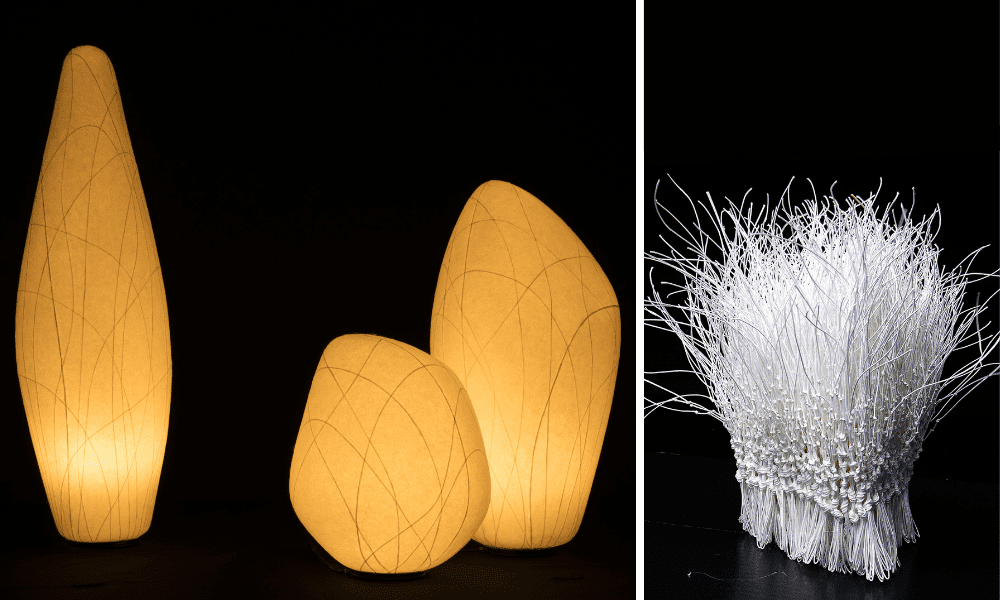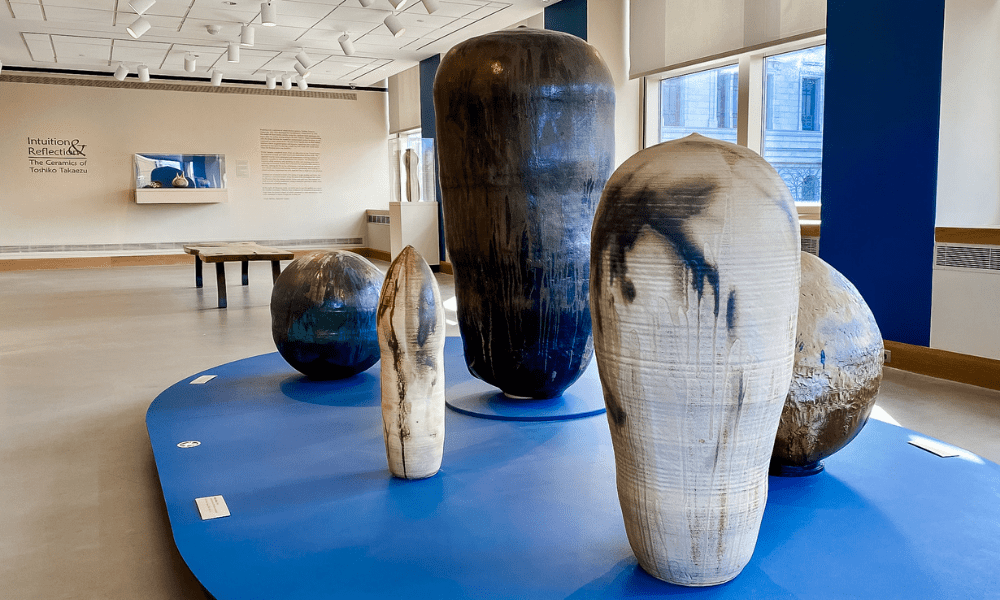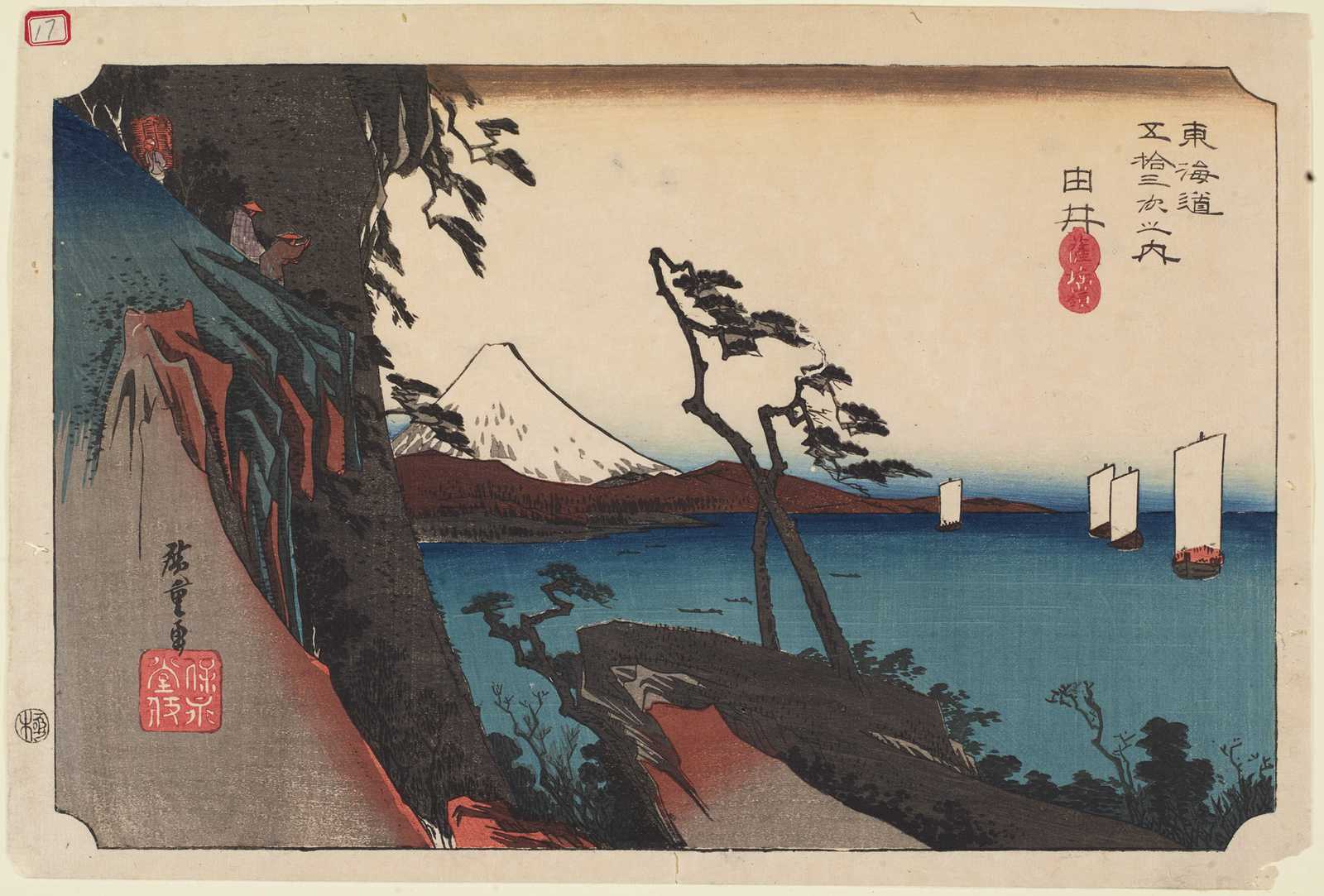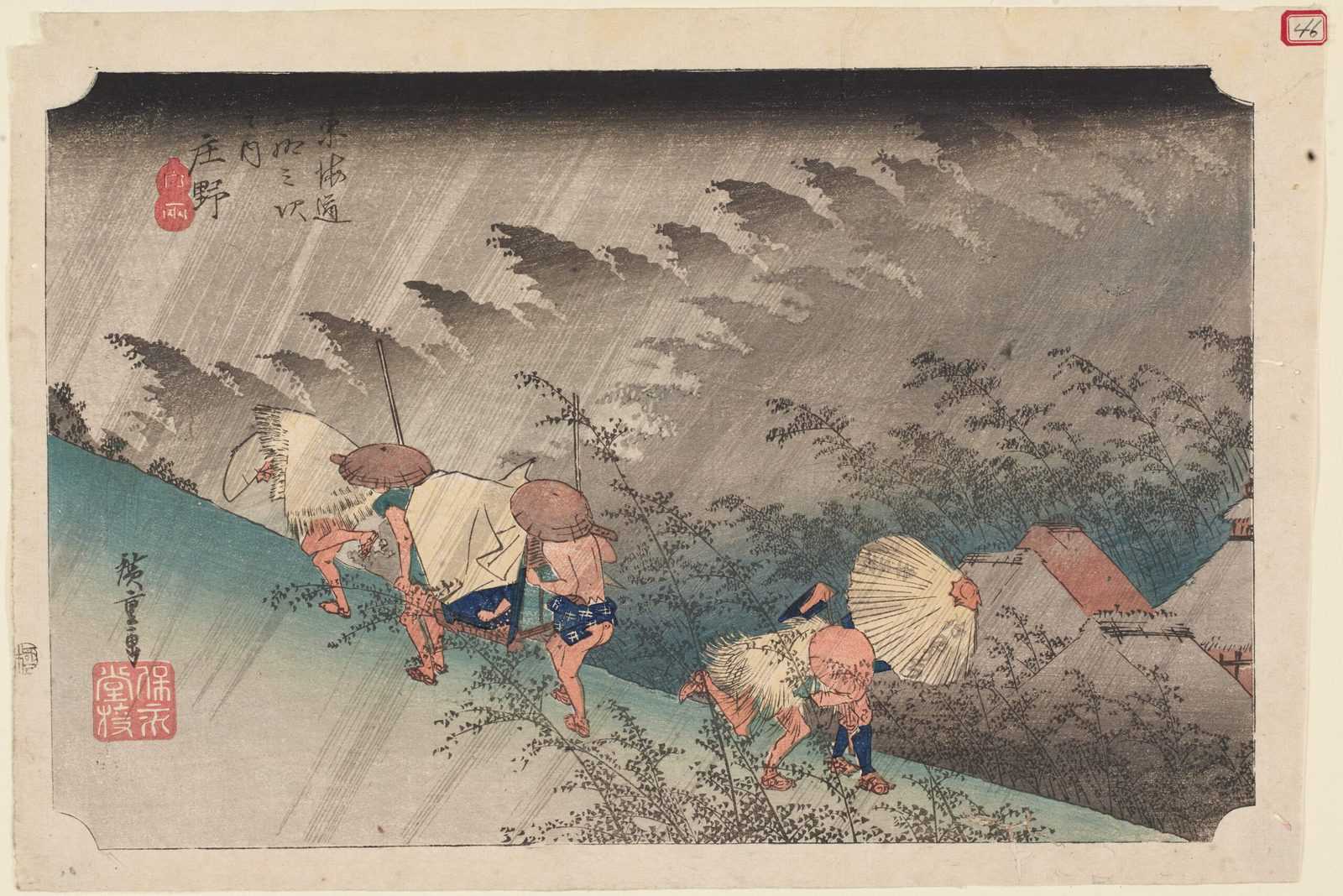Explore the Japanese art on view in the Lehigh Valley during fall 2021 with Allentown Art Museum Associate Curator, Claire McRee, and founding member and chair of Lehigh Valley JAJAJA, Miki Sankary.
Exhibitions explored in the program:
Washi Transformed: New Expressions in Japanese Paper
On view through January 2, 2022

Eriko Horiki, Washi Light Object ISHI, 2017, Washi paper and resin mold, light fixture (steel), Image courtesy of the artist, © Eriko Horiki. Kakuko Ishii, Musubu W0, 2006, Washi paper (Mizuhiki), Image courtesy of the artist, © Kakuko Ishii.
Our featured fall exhibition Washi Transformed presents work by nine contemporary artists working in washi—traditional Japanese handmade paper. Their creations—abstract paper sculptures, lyrical folding screens, highly textured wall pieces, and other dramatic installations—demonstrate the resilience and versatility of washi as a medium as well as the unique stature this ancient art form has earned in the realm of international contemporary art.
Washi Transformed: New Expressions in Japanese Paper was organized by Meher McArthur and is toured by International Arts & Artists, Washington, DC.
Collecting Across Cultures: Japanese Textiles in the West
Ongoing rotations through May 2022
The Allentown Art Museum holds hundreds of Japanese textiles and ukiyo-e woodblock prints, largely due to Americans’ interest in collecting this material in the early twentieth century. The complex stories behind some of these textiles are investigated in Collecting Across Cultures: Japanese Textiles in the West. This exhibition explores social upheaval in Meiji Japan, the motivations of American collectors, and the varied meanings these objects had as they migrated across borders.
Intuition & Reflection: The Ceramics of Toshiko Takaezu
On view through August 14, 2022

Installation view: Intuition & Reflection: The Ceramics of Toshiko Takaezu
Themes of tradition and innovation are also reflected in Intuition & Reflection: The Ceramics of Toshiko Takaezu. While Takaezu completed most of her art education in the United States, her Japanese heritage provided important inspiration for her work. Her approach was by turns intentional and spontaneous, drawing on traditions of Japanese ceramics as well as Buddhism.
Utagawa Hiroshige’s Tōkaidō Road Series: Works from the Allentown Art Museum
On view at the Williams Center Gallery, Lafayette College, through December 18, 2021

Andō Hiroshige (Japanese, 1797–1858), Satta Pass at Yui, from the series Fifty-three Stations of the Tōkaidō Road, 1833-34, woodblock print. Gift of Mr. and Mrs. Fowler Merle-Smith, 1991. (1991.40.86)
And finally, stop by the Williams Center Gallery at Lafayette to see Utagawa Hiroshige’s Tōkaidō Road Series: Works from the Allentown Art Museum. Curated by Dr. Ingrid Furniss and Nick Scaglione, this exhibition features the Museum’s set of Hiroshige’s iconic 53 Stations of the Tōkaidō Road. This 1833-34 series is among the best-known works of Japanese art: it intersperses beautiful vistas and scenes of everyday travel on the Tōkaidō Road, a 320-mile route linking Edo (Tokyo) and Kyoto.
Utagawa Hiroshige’s Tōkaidō Road Series is curated by Professor Ingrid Furniss of the Art Department and EXCEL Scholar, Nick Scaglione, Class of 2021.

Andō Hiroshige (Japanese, 1797–1858), Sudden Shower at Shōno, from the series Fifty-three Stations of the Tōkaidō Road, 1833-34, woodblock print. Gift of Mr. and Mrs. Fowler Merle-Smith, 1991. (1991.40.115)

